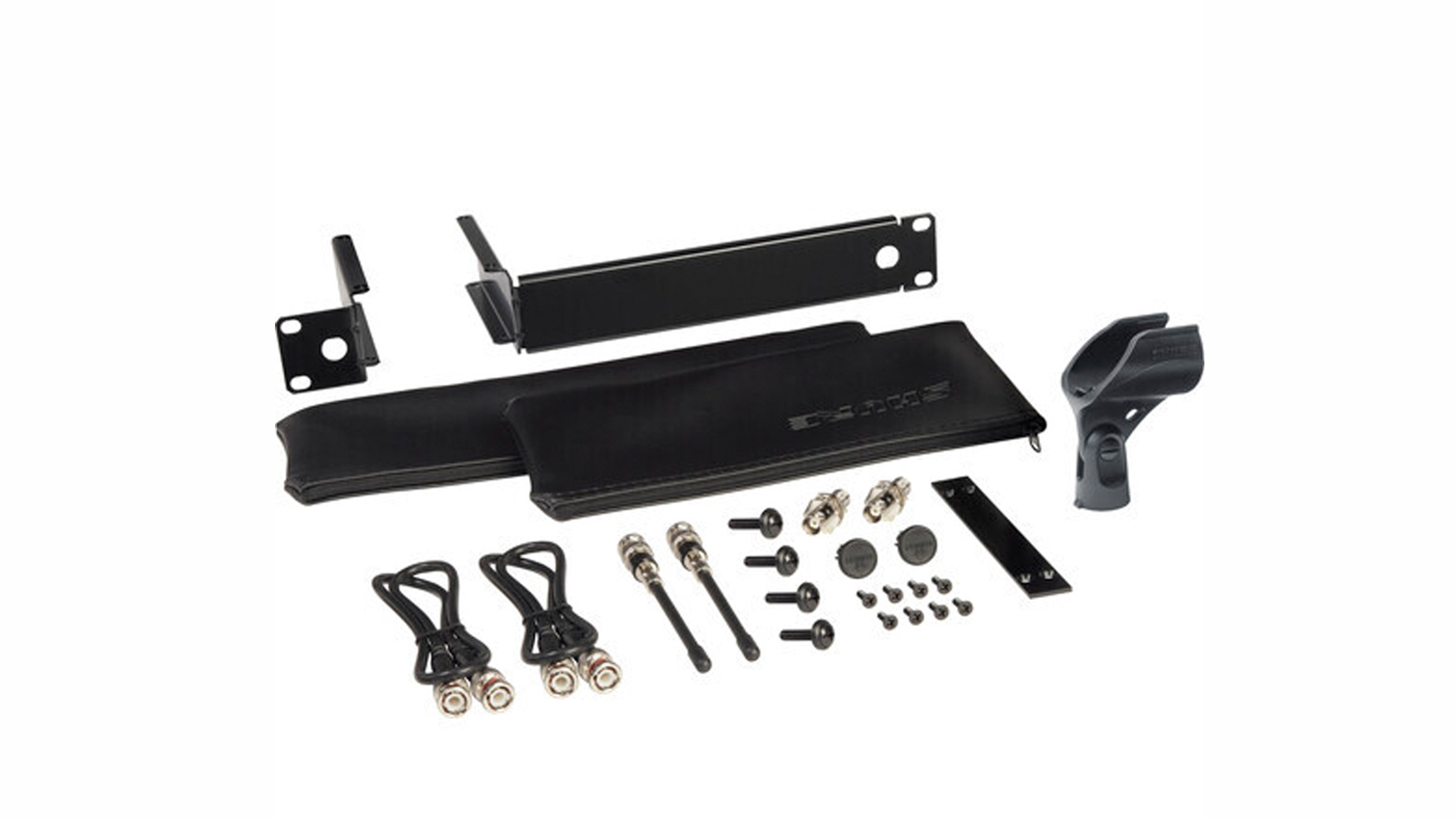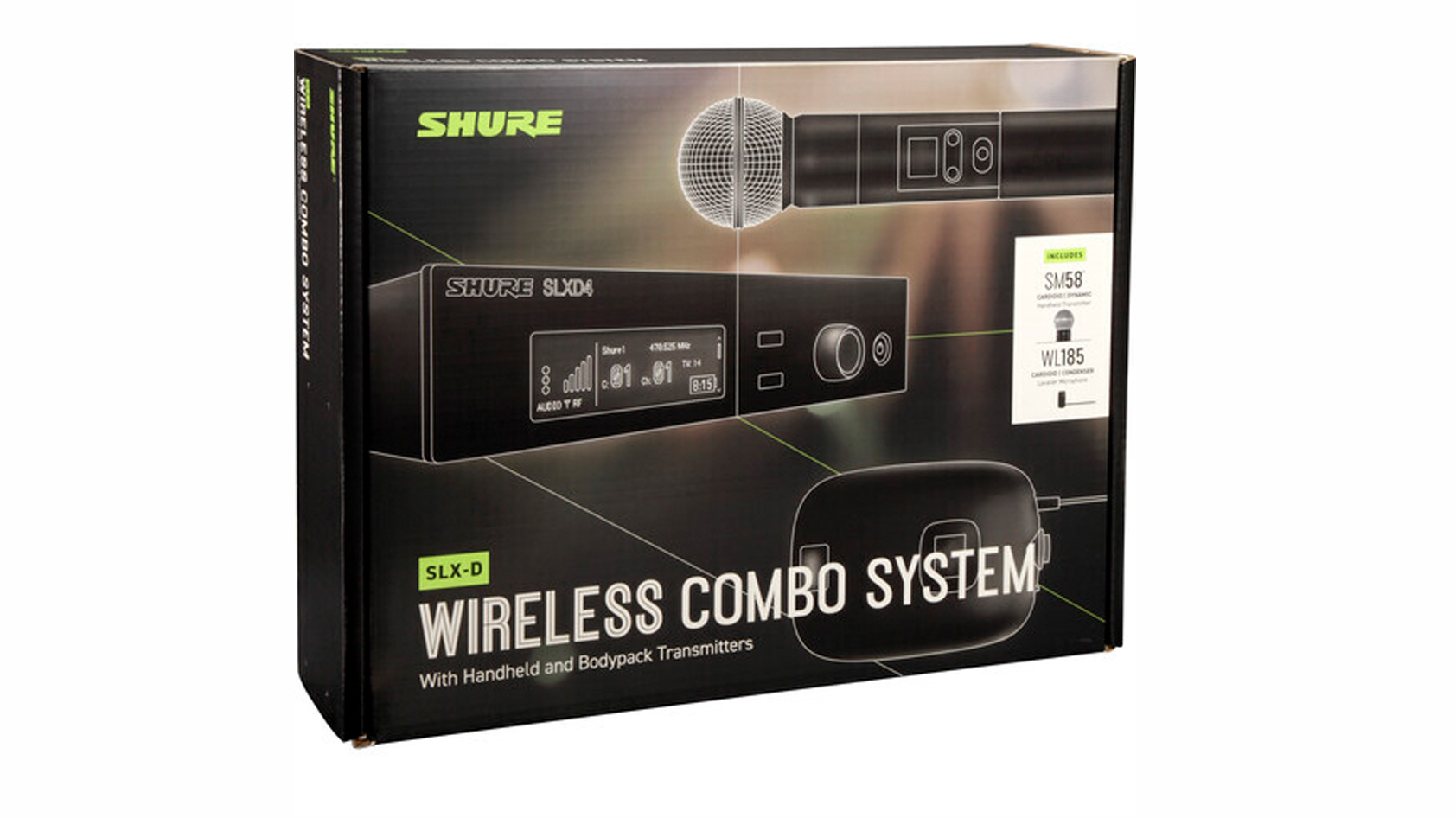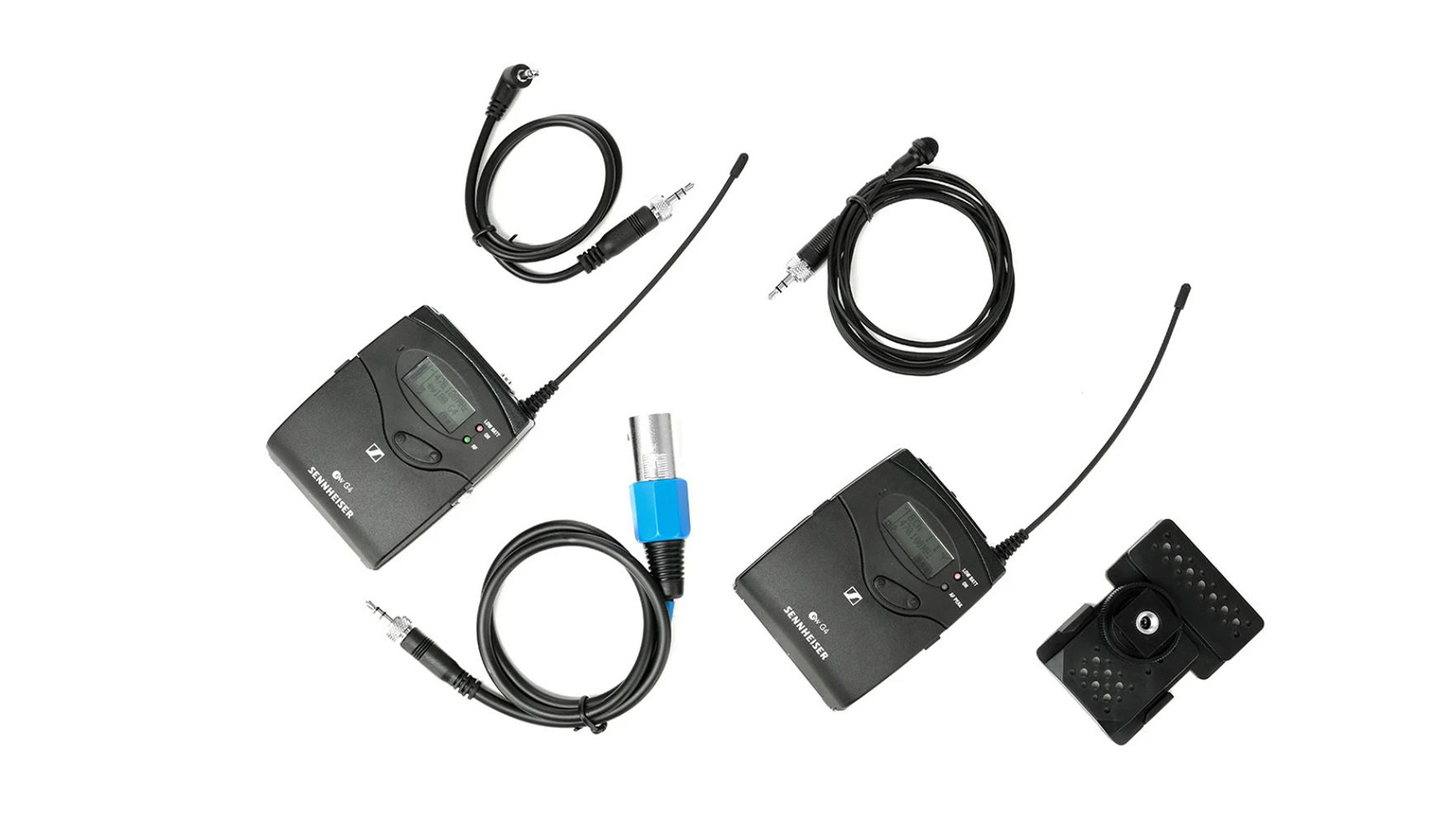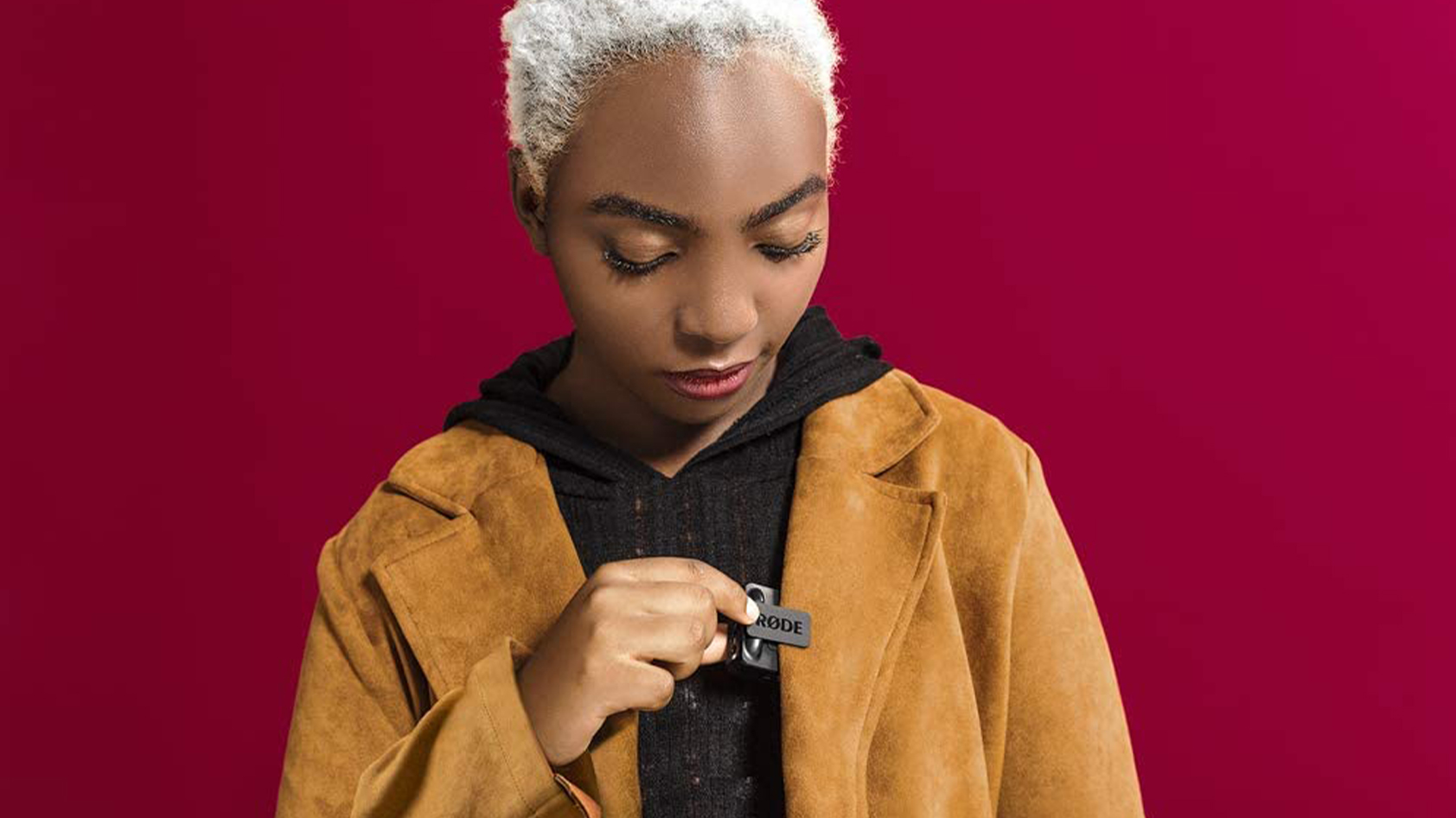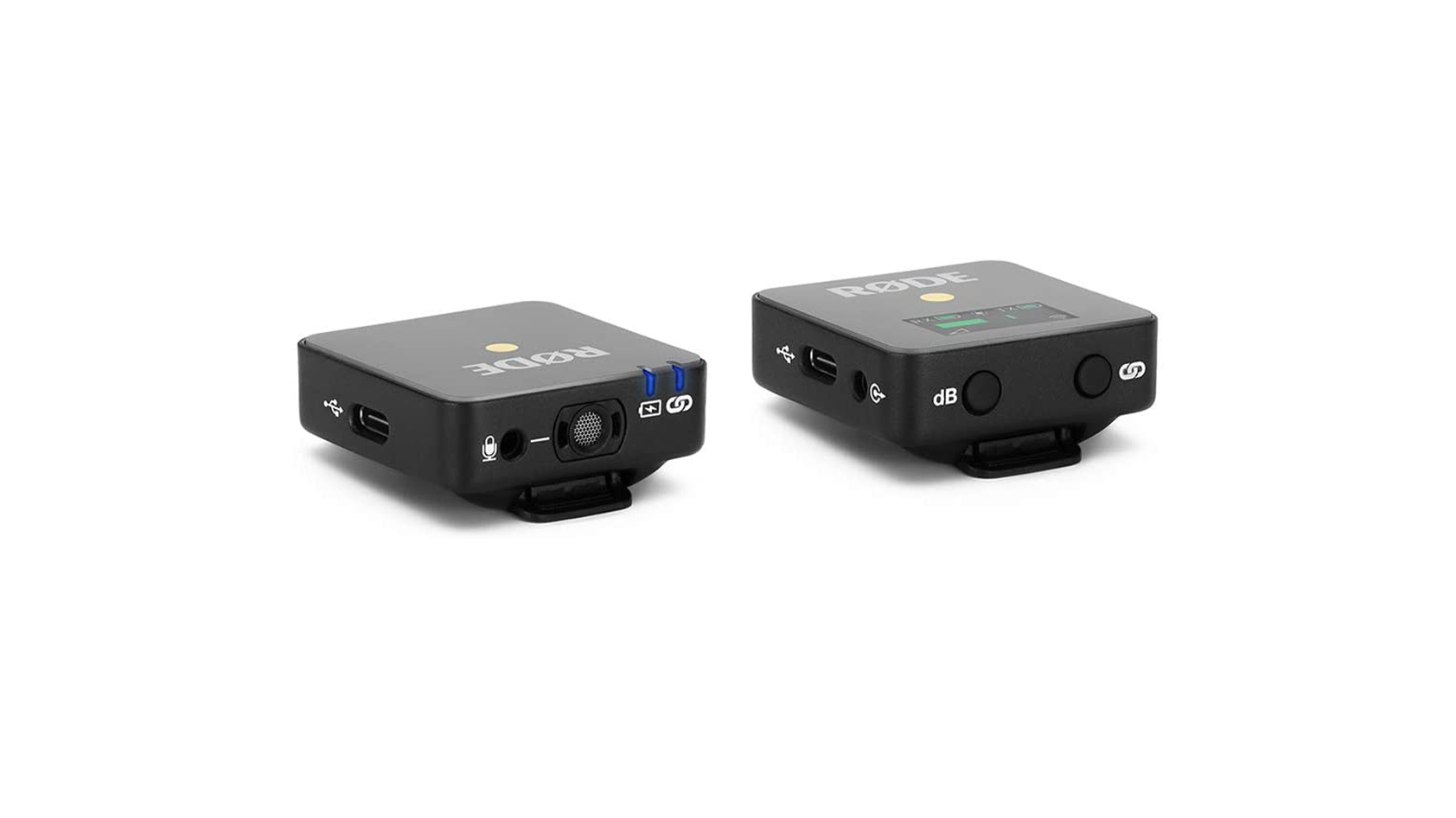All products featured are independently chosen by us. However, SoundGuys may receive a commission on orders placed through its retail links. See our ethics statement.
Best wireless microphones
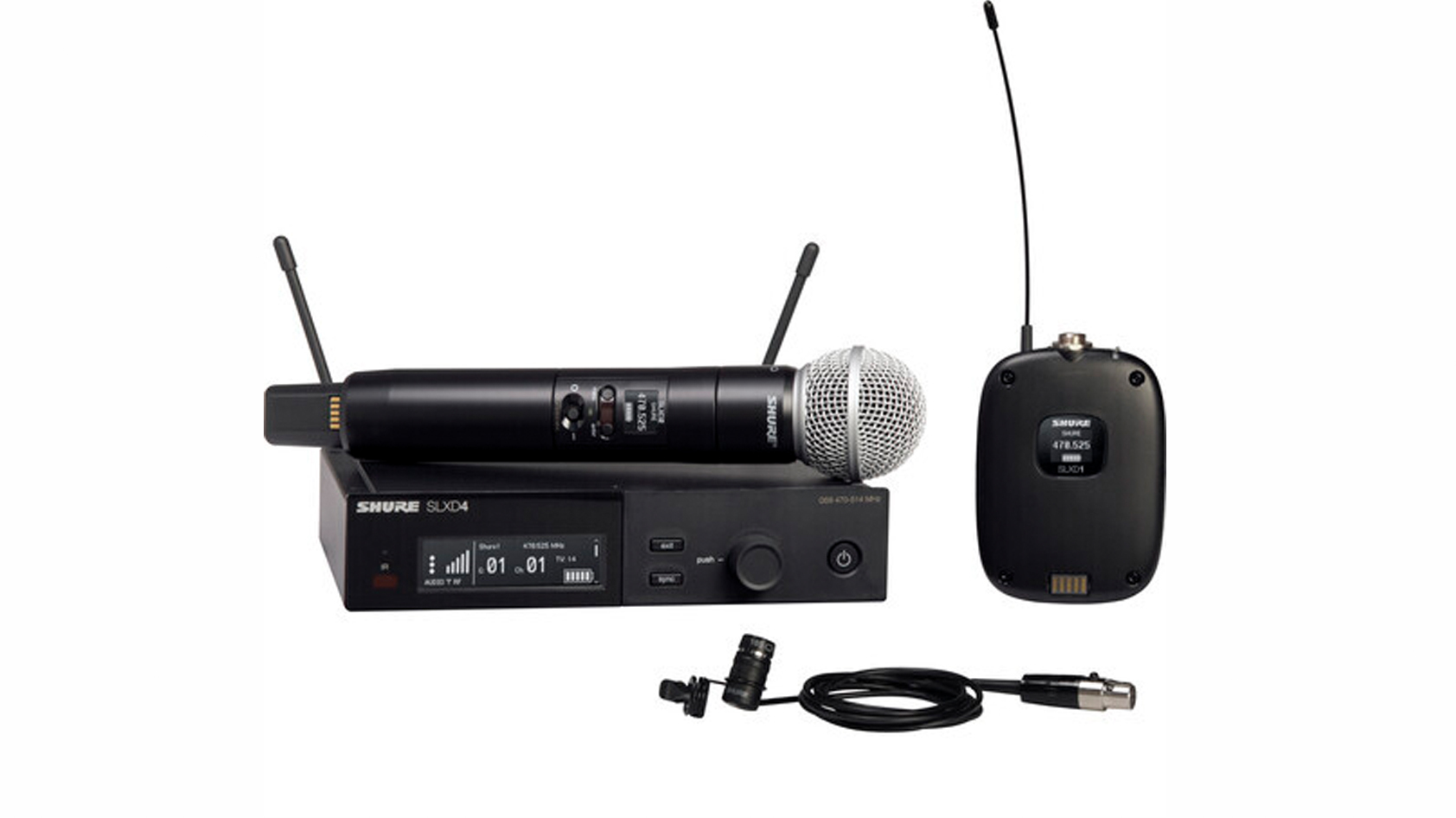
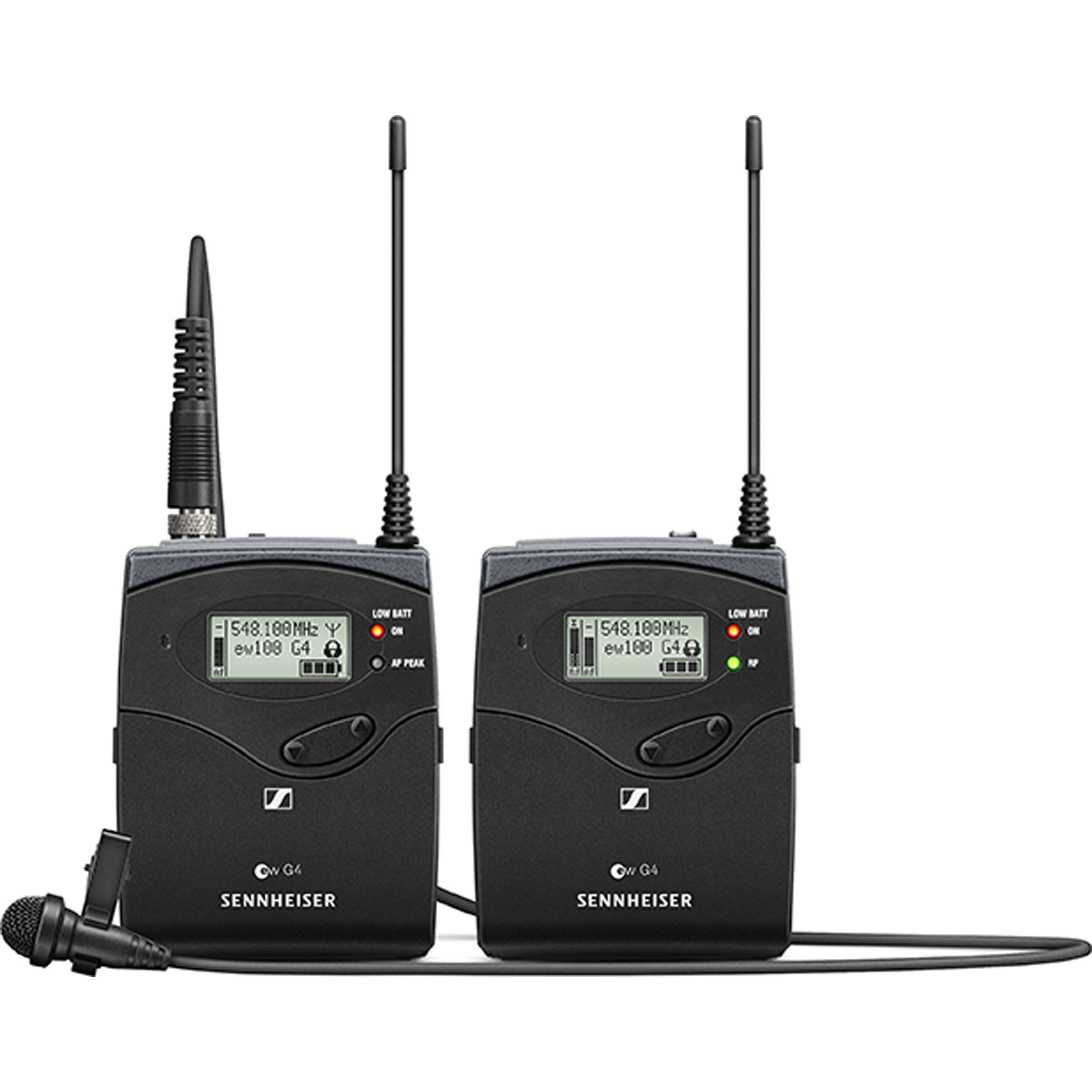
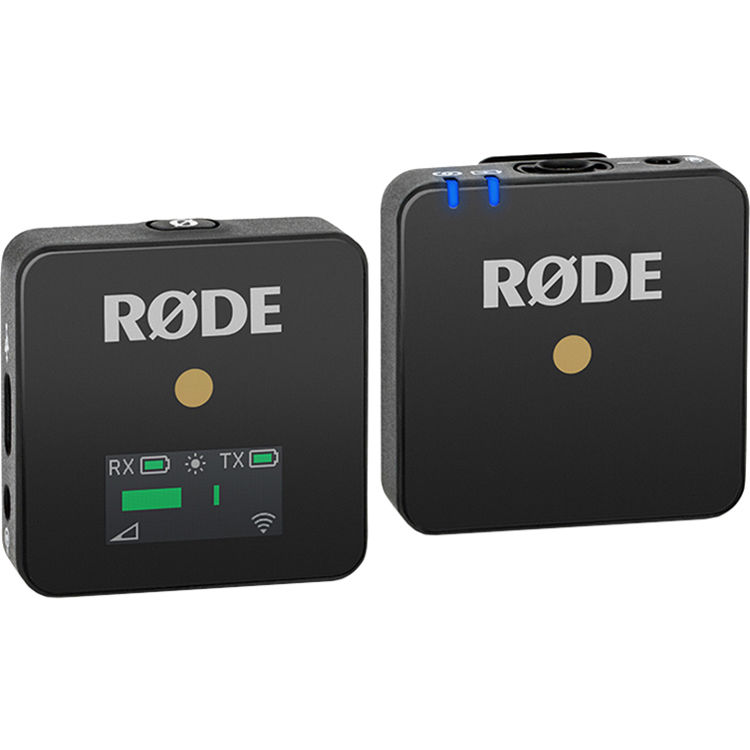
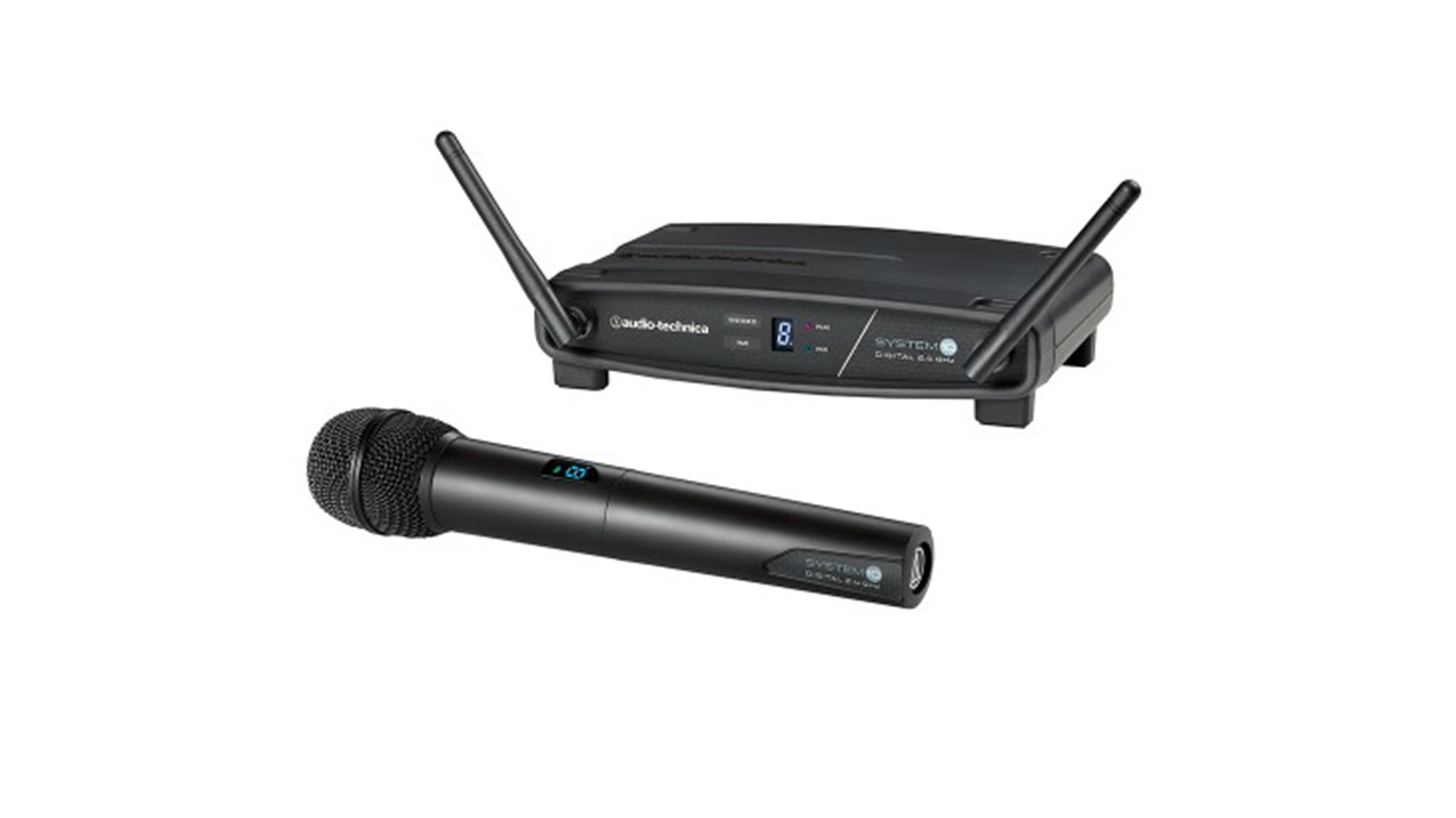
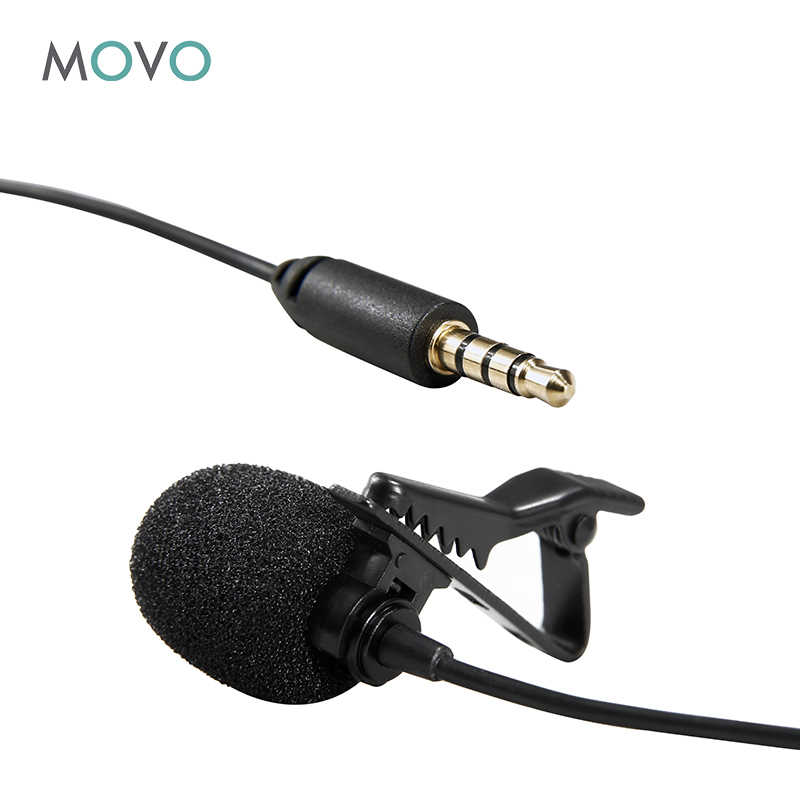
If you’re a skit comedian, a vlogger, a church leader, or a DJ, you might be sick of wires getting in the way of your performance — MCs and vocalists too! Wireless microphones can be difficult to wrap your head around, so we’ve listed the top five options, including clip-on lavalier microphones for any application and more.
What's new?
- This list was updated on September 28, 2023, to add product classifiers, refresh our Notable Mentions, and answer more frequently asked questions.
Why is the Shure SLXD124/85 the best wireless microphone system?
The best wireless microphone system comes with four separate components: a handheld microphone, a lavalier, a bodypack transmitter to connect the lavalier, and a receiver. This system is available in several different models, which differ only by the frequency band they operate on. Any of the model options will likely be fine for your needs, but if the region you live in has legal limitations on usable RF bands, you can opt for a different one.
There’s a lot of meat here, so bear with me: there are 1760 available radio frequencies within each model’s bandwidth, so you have many options if you’re in an area with a lot of wireless devices. Don’t want to mess around with trial and error? The system’s auto-scan feature locates a clear channel for you: the bodypack transmitter or SM58-integrated transmitter automatically syncs with the receiver at the push of a button. To be clear, though, you cannot connect both transmitters to the same receiver at once. You are able, however, to operate 32 of these systems (transmitter and receiver pair) on the same frequency band at the same time. The Shure SLXD124/85 uses Digital Predictive Switching Diversity which switches between the two antennas to reduce the frequency of dropouts.
Shure SM58 microphone demo:
The system’s receiver is best suited for connection to a PA system due to its size and is not ideal for attaching to a smartphone or video camera. Additionally, it has an XLR output and 1/4″ output but lacks a 3.5mm minijack output. Connecting from this XLR output to an XLR input is easy, but you’ll need a 3.5mm to female XLR cable if you want to connect the best wireless microphone system to a DSLR camera.
The microphone capsule on the handheld mic/transmitter is identical to that of the wired Shure SM58. Its cardioid polar pattern effectively rejects off-axis sound, which is great for music gigs. The treble amplification emphasizes harmonic resonances for a greater perceived sense of clarity, while the bass attenuation reduces the proximity effect. Since this is a dynamic mic, it can make loud noises without distortion kicking in, further increasing its use for live performances. It lasts 8 hours on two AA batteries or a Shure SB903 rechargeable battery.
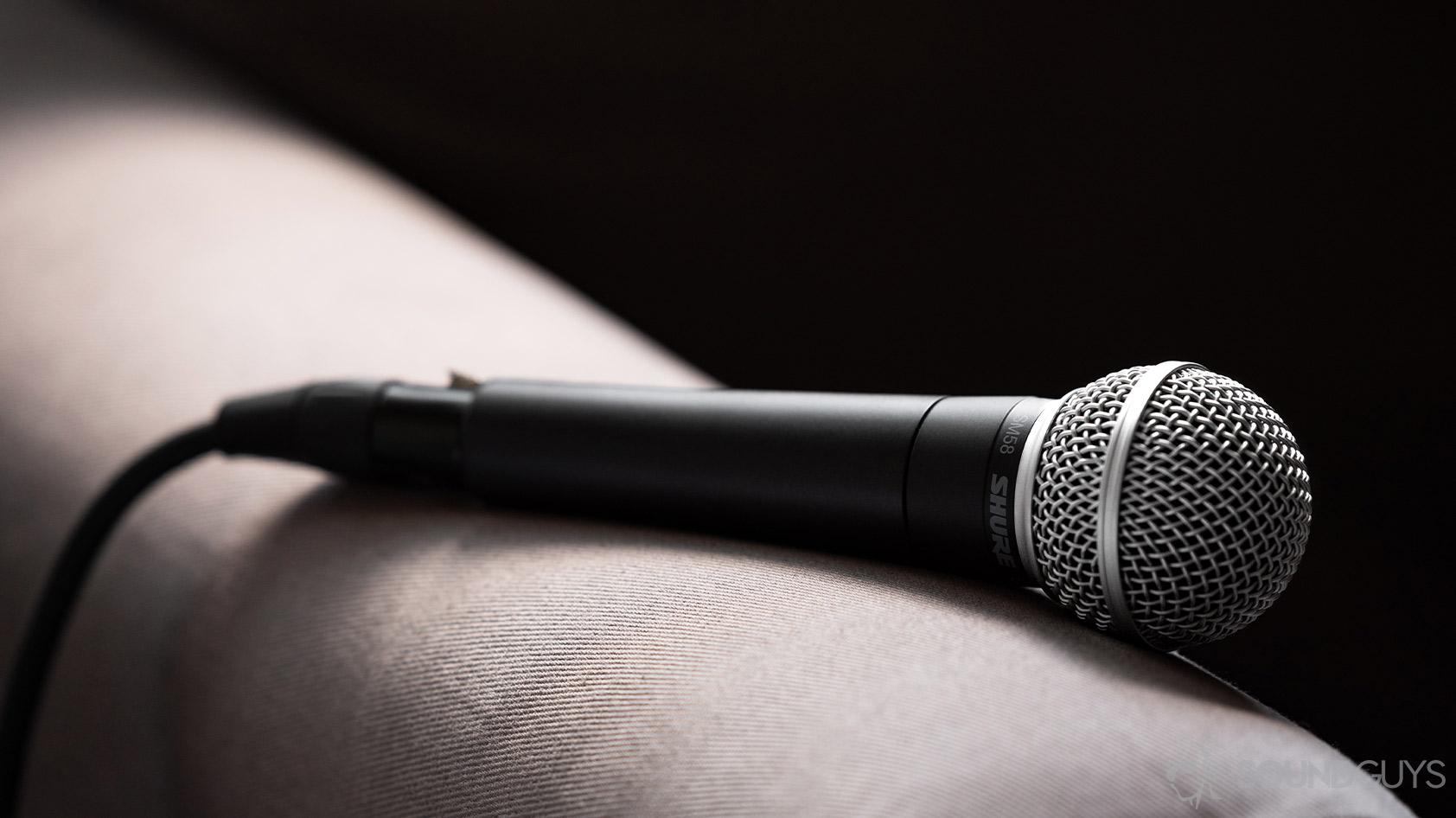
The WL185 lavalier mic has built-in CommShield technology, which helps reduce interference from other radio frequency devices. Its polar pattern is also cardioid, which means it isn’t the most convenient for placement on the body: you need to be speaking into its top. The benefit: it rejects background noise. Shure sells omnidirectional and super-cardioid capsules that can be installed to replace the cardioid one here. You may also buy windscreens to reduce breathing sounds as well as plosives from speech.
The best wireless lavalier is the Sennheiser EW 112P G4
This wireless lav system by Sennheiser is portable and compact, making it perfect for connecting to any video camera. The EW 112P G4 comes with a 3.5mm-to-3.5mm cable as well as a 3.5mm-to-male XLR cable, so the receiver is compatible with pretty much everything. However, if you want to connect to an XLR input, you have to use the 3.5mm-to-XLR cable because the receiver doesn’t have an XLR output, and this type of cable does not have as reliable of a connection as an XLR-to-XLR cable. The receiver itself isn’t built to fit smoothly with a PA due to its small size, but you can still make it work; the same goes for smartphone compatibility. The EW 112P G4 comes with a hot shoe mount and is ideal for hooking up to video cameras for high-quality audio.
The lavalier microphone, called the ME2-II, has an omnidirectional pickup pattern and can be placed freely without worrying too much about voice levels. The frequency response is a little narrower than the common microphone, allowing it to attenuate both the very high frequencies and the very low ones. While this may not make for the most accurate sound reproduction and therefore should not be used for recording music, it allows for high speech intelligibility because it zeroes in on the most relevant vocal frequencies.
The ME2-II has a combination of high sensitivity and a high max SPL, meaning you can record vocals to be much louder than any ambient noise. Additionally, both the transmitter and receiver allow for sensitivity adjustment, and a pre-installed windscreen protects the recording capsule from unwanted sounds like plosives, fricatives, and wind noise.
The Sennheiser EW 112P G4 has an auto-scan feature and is compatible with 1680 selectable frequencies across a 42MHz bandwidth, so you won’t need to worry about finding an empty frequency. Additionally, you can operate 12 EW 112P G4 systems (transmitter and receiver pair) on the same frequency band at once. The best wireless lavalier microphone system’s signal range is 100 meters, and it operates decently through obstructions.

The best wireless microphone system for smartphones is the Rode Wireless Go
If you are looking to vlog with your smartphone’s camera, you may want better audio quality than your phone’s mic can provide—particularly when filming at a distance. There are wireless microphone systems out there that connect more smoothly to smartphones than the Rode Wireless Go, but the Wireless Go affords consistent wireless connectivity, which is invaluable. The Rode Wireless Go is no-frills and the best wireless microphone system for smartphones.
This system comes with a tiny transmitter and a tiny receiver, both of which can easily be clipped to clothing or a selfie stick’s cold shoe. The transmitter has a built-in omnidirectional microphone, and its small size means you can easily hide it in your collar. Rode includes an attachable windscreen, but it is not very secure. Additionally, the audio quality of the inbuilt mic isn’t great. If it doesn’t satisfy you, we recommend adding a lavalier mic to this setup, and the Movo PM10 is an affordable and good quality choice. The 3.5mm input on the Rode Wireless Go transmitter is non-locking, so you’ll want to make sure your lav isn’t at risk of being ripped out.
The receiver has three options for attenuation pads, so you can adjust your volume to avoid any clipping. If you have an iPhone and no 3.5mm input, you’ll need an adapter to plug the receiver into your phone. Once everything is properly connected, audio and video will be synchronized.
The receiver has three attenuation pad options, so you can avoid audio clipping on the fly.
The wireless connection on the Rode Wireless Go is very easy to use and operates over a 2.4GHz bandwidth, automatically finding the clearest channels available, so users don’t need to understand RF jargon. Convenience is great, but the 2.4GHz bandwidth can be very crowded by Wi-Fi and Bluetooth, and interference may occur. Don’t let that deter you: all wireless microphone systems are prone to interference. The connection on the best wireless microphone system for smartphones extends to 70 meters, and you can operate eight of these systems at the same time in one location. Both the transmitter and receiver have a rechargeable battery with about a 7-hour battery life.
The Rode Wireless GO II includes more features
While the Wireless GO II looks nearly identical to the Wireless GO, it adds important features like dual-channel recording, expanded device compatibility, and onboard storage. The second-generation model includes two transmitters with integrated omnidirectional condenser mics and one dual-channel receiver. You’re allotted 24 hours of recording with the onboard storage (compressed) or 7 hours of uncompressed audio.
The Rode Wireless GO II costs a bit more than the original.
The Audio-Technica System 10 ATW-1102 is the best handheld wireless microphone
If you’re looking to use a wireless microphone system with a PA, look no further. The best handheld wireless microphone system makes pairing the receiver with the transmitter easy. This system operates over the 2.4GHz frequency band, but it utilizes frequency, space, and time diversity when creating a wireless connection; the likelihood of interference is much lower than it would be sans diversity. Furthermore, the double antennae in the transmitter ensure a stable connection. The receiver antennae also operate independently of one another, so if one is running into problems, the other can save your connection. The System 10 ATW-1102 finds its connection automatically. All you have to do is select your channel, and it will fluctuate frequencies within that channel.

The receivers are stackable, and you can operate eight of them simultaneously within the same frequency band. They sport both XLR and ¼” outputs but no 3.5mm minijack output. This should be fine because this system is not suited for connecting to video cameras or smartphones; it’s not portable, as it must be plugged into a power source. Additionally, the wireless range is on the shorter end (30 meters). If you are only using this system in an auditorium, church, or small performance space, it should work just fine.
The handheld microphone has a unidirectional pickup pattern and is a dynamic microphone capsule, so it is great for isolating sounds on stage and withstanding loud sounds without distorting them. The best handheld wireless microphone has 24bit/48kHz operation, which affords plenty of leeway when editing. The mic also has a mute function and a 7-hour battery life.
The Movo PM10 lavalier Microphone is the best no-frills option
Full disclosure: we’re kind of cheating with this one. The Movo PM10 isn’t technically a wireless option because it is just a lav mic without any receivers or transmitters. Of course, you can hook it up to a wireless system, such as the Rode Wireless Go, but we’re offering you a hack that saves you from splurging for a wireless system.

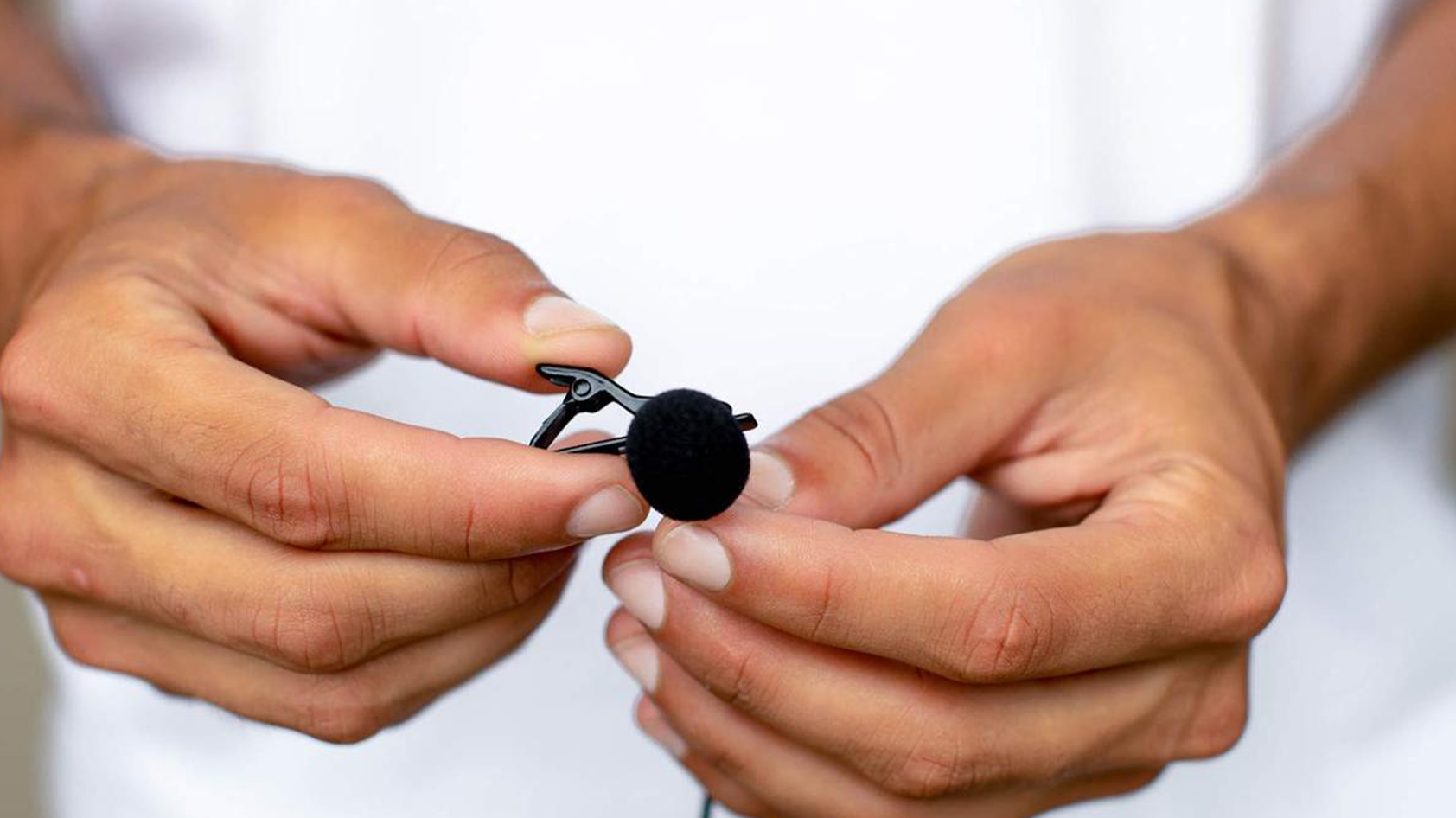
The Movo PM10 connects directly to a smartphone through a 3.5mm input and can be used with any audio recording app that can detect external microphones. Once you’ve plugged this lavalier mic in, you just pocket your smartphone or recording device. Video can then be recorded with a separate video camera, and you can manually synchronize the audio during post-production. This is easy enough: clap a few times at the beginning of the recording and later sync the claps up. The Movo PM10’s extra-long cable (1.2 meters) means you can use it while your iPhone serves as the video camera. This will allow you to avoid having to manually sync your audio and video. Keep in mind that the Movo PM10 is not directly compatible with a DSLR video camera and is only meant to be plugged into a smartphone.
The mic has an omnidirectional pickup, but it does an okay job of rejecting ambient noise due to the ratio of its sensitivity and max SPL, and the audio quality is fairly clear for the price. Additionally, this lapel mic comes with two attachable windscreens and tie clips, as well as a carrying case. For under $15 and no need to understand radio frequencies, the Movo PM10 is a pretty solid option.

The best wireless microphone systems: Notable mentions
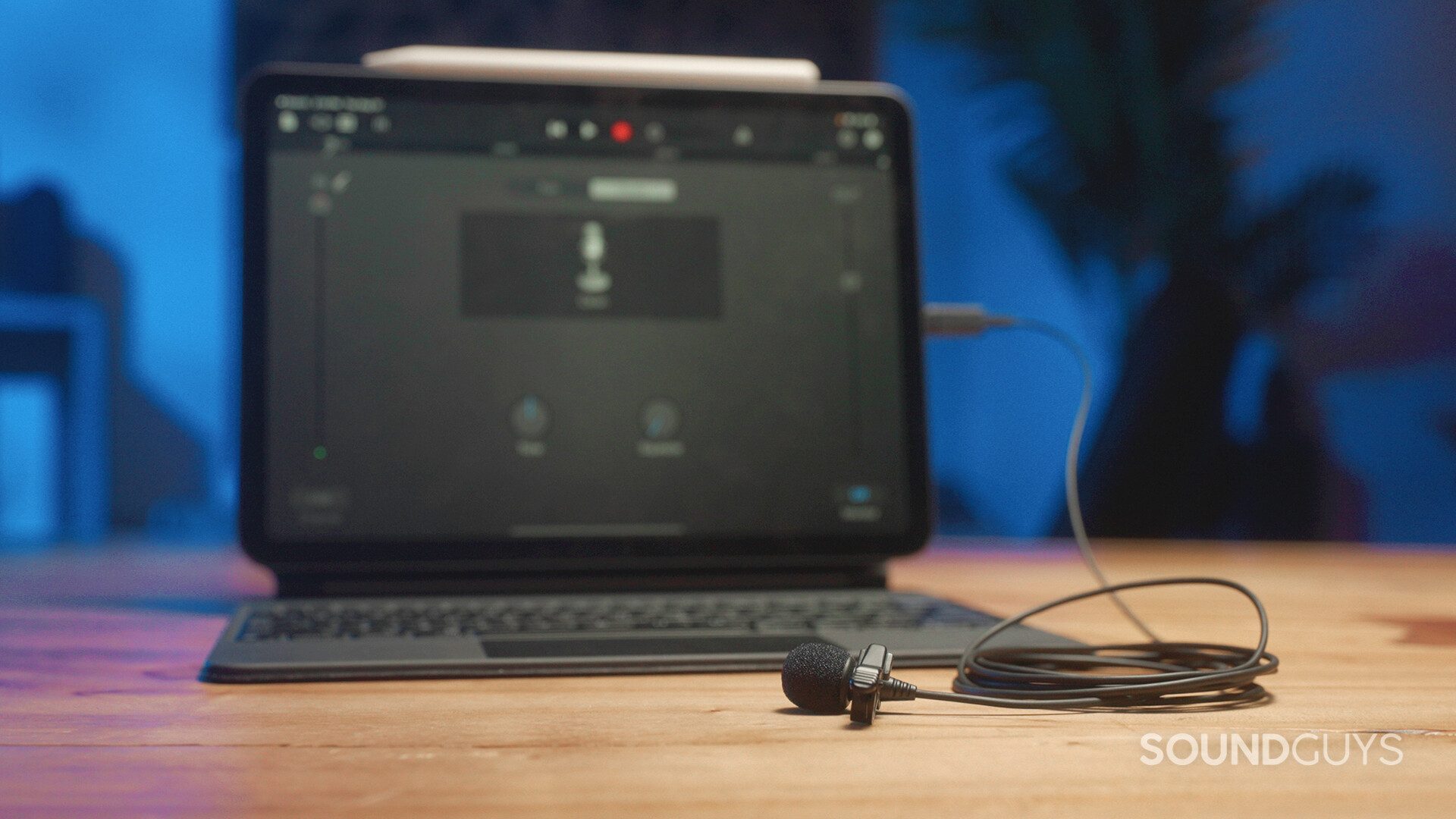
- DJI Mic: Available with a few different tweaks, this wireless mic set competes with the Rode Go, plus it comes in a tidy charging case. The easy-to-read OLED touchscreen is appealing too for only $499 at Amazon.
- Rode Wireless ME Clip-on Wireless Microphone System: A stripped-down version of the Rode Wireless GO series, this tiny mic package transmits up to 100m and can directly link to your phone. Pick one up for $999.99 at Samsung.
- Sennheiser AVX series: Not quite boasting the same range as the Sennheiser G3 and G4 range, these come in various packages, such as the 835 with a handheld mic ($899 at Amazon).
- Shure QLXD124/85: This upgrade to the Shure SLXD124/85 is a bit pricier ($299 at Amazon) but is more suitable for larger venues than the SLXD124/85. Like the cheaper model, it comes with a receiver, handheld Shure SM58 transmitter, a lavalier mic, and a bodypack transmitter to attach the lav mic to.
- Shure BLX24/PG58: Fans of Shure who don’t want to break the bank should check out this bare-bones wireless microphone system for $99 at Amazon. It comes with just a receiver and a handheld microphone transmitter. The mic model is a slight downgrade from the Shure SM58, but it should do the trick in a pinch.
- TONOR TW-630: This sub-$100 pick has a portable and rechargeable receiver that you can take around with you, making it useful for outdoor events where a power outlet isn’t available. The system comes with 2 handheld microphone receivers for only .
What you should know about the best wireless microphones
What are the different components of a wireless microphone system?
A wireless mic system is composed of three main units: a microphone, a transmitter, and a receiver. Wireless lavaliers are connected to a transmitter by a wire; otherwise, the transmitter is integrated into the base of a handheld mic. The transmitter collects the audio data from the microphone and sends it through radio frequencies over to a receiver. You can then connect this receiver to a camera, a smartphone, or a PA, depending on the cables and output ports you have.
What are the different types of wireless mics?
A lavalier, or lapel mic, is a small microphone often attached to the collar of a shirt by a clip. The lav is connected by a wire to a transmitter which its user can keep in her pocket. The main difference between a lav and a handheld wireless mic: is how the microphone is built, including its shape, size, and use case. Handheld mics are preferred for live performances as they’re very forgiving when it comes to placement; lavaliers, on the other hand, are great when you don’t want the mic to obstruct the frame of a video. Sure, you could connect a shotgun mic to a boom pole, but that gets expensive fast too.
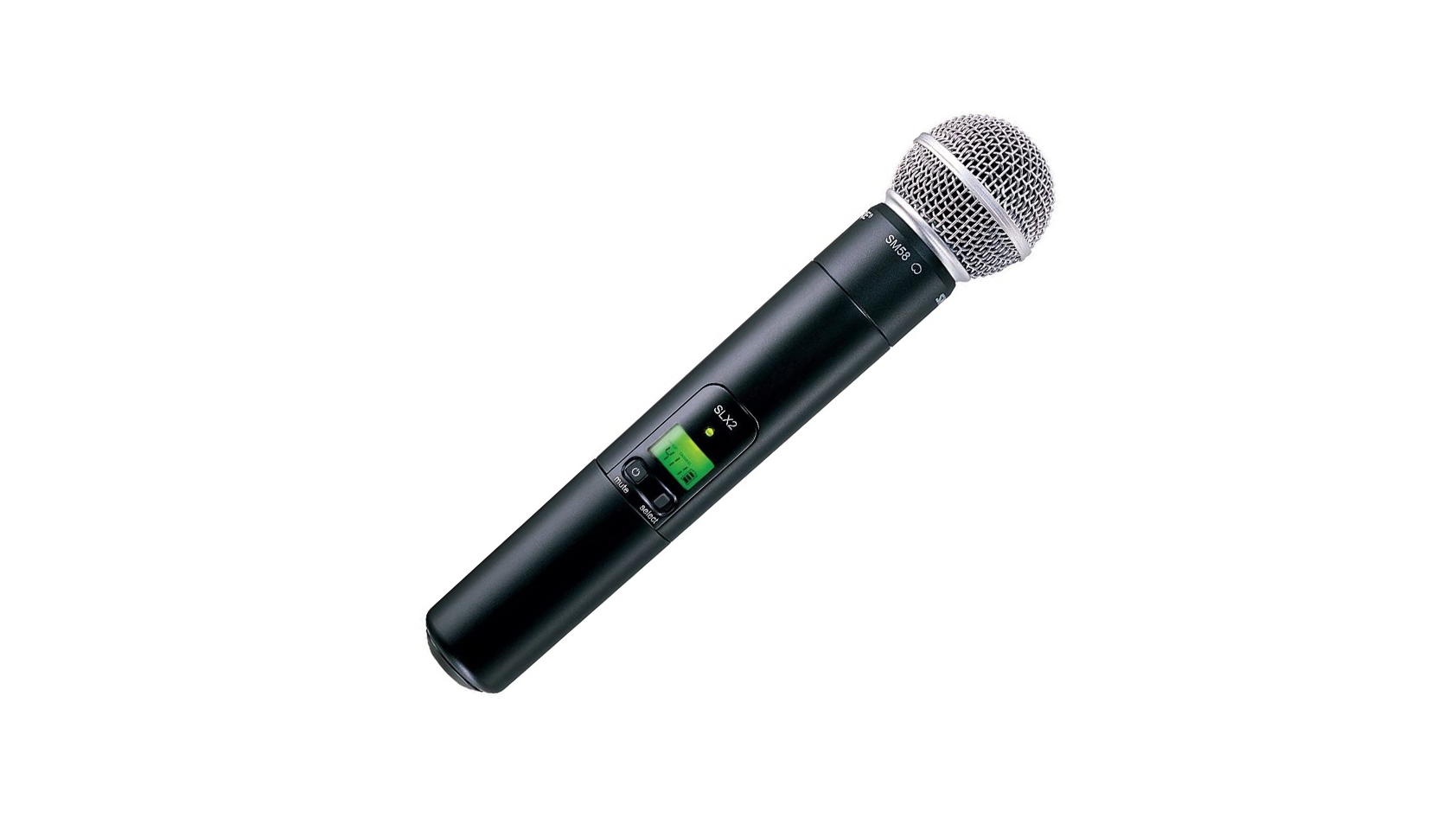
The receiver is what determines what your wireless microphone system is compatible with. Typically, a receiver will have several outputs so that the system can be hooked up to a DSLR video camera, a smartphone, or a PA system. Whether you’re recording into a smartphone (with a headphone jack) or a DSLR, a 3.5mm minijack is the cable you should be looking for. You may need to get a lightning USB adapter (a dongle) for compatibility with an iPhone.
Even if your receiver only has an XLR output, you can find adapter cables for pretty much any connector type. Keep in mind that not all smartphone apps recognize external microphones. In that case, it won’t register your wireless system, but these apps are few and far between. To connect your wireless system to a PA, your receiver must have an XLR output; these are also used for connection to certain video cameras. Once your receiver is connected, it automatically syncs up the audio recorded from your wireless mic to the video being recorded.
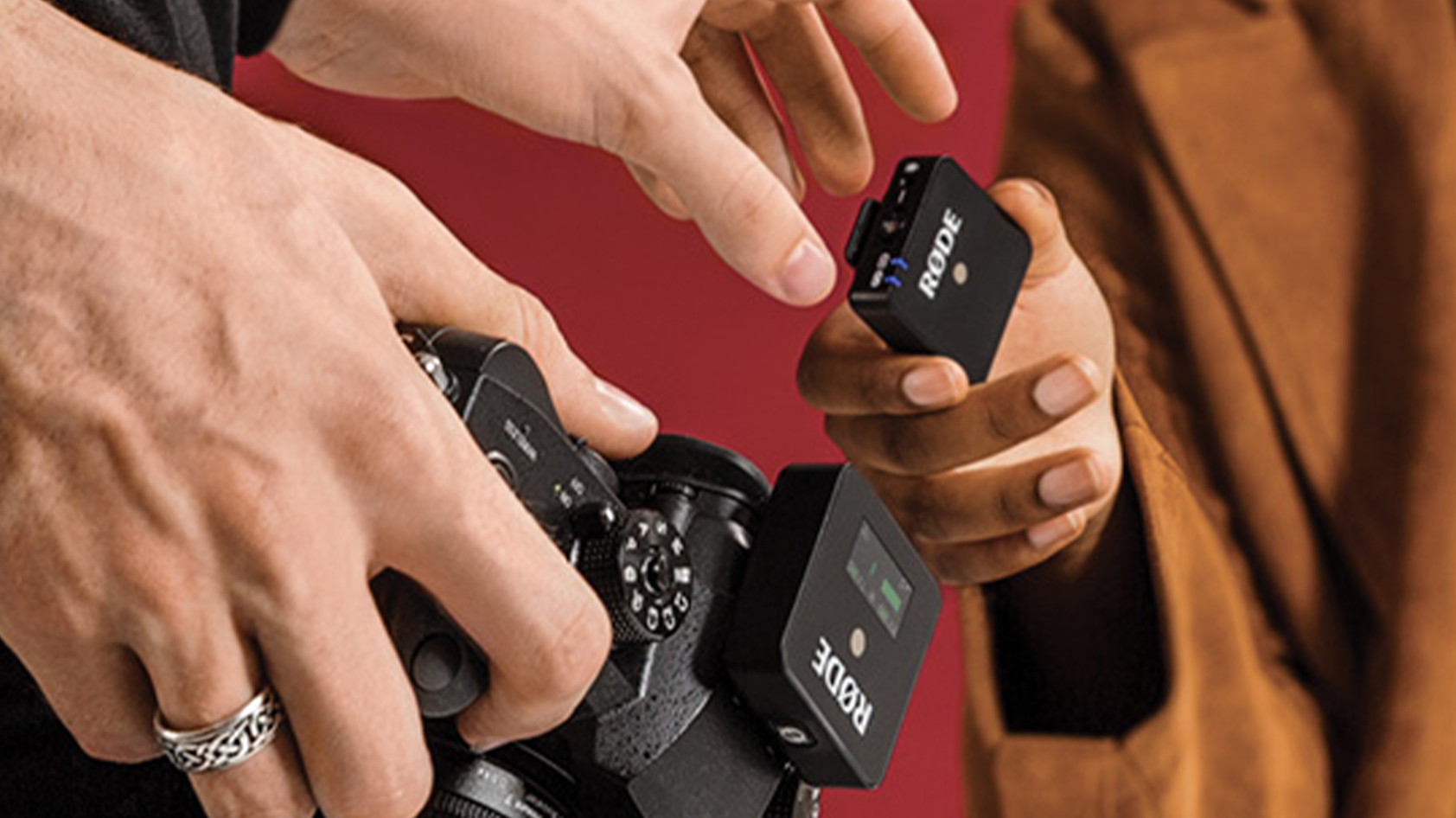
As for physical compatibility with your recording or amplifying device of choice, it’s really a matter of preference. Some wireless microphone receivers attach easily to smartphones, making them portable and easy to use. But any receiver with a 3.5mm output will work just fine. Some wireless microphone receivers come with hotshoe mounts, which are specifically meant for attaching the device to a video camera.
Connection and radio frequency limitations are region-specific
In the United States, the Federal Communications Commission (FCC) dictates the frequencies that wireless microphones are allowed to operate within. Before purchasing a wireless microphone system, it’s important to examine the radio frequency range that the microphone uses. Most importantly, as of July 13, 2020, the FCC has banned the use of devices operating within the 617-652MHz and 663-698MHz ranges. If you live outside of the United States, research limitations on radio frequencies within your particular place of residence.
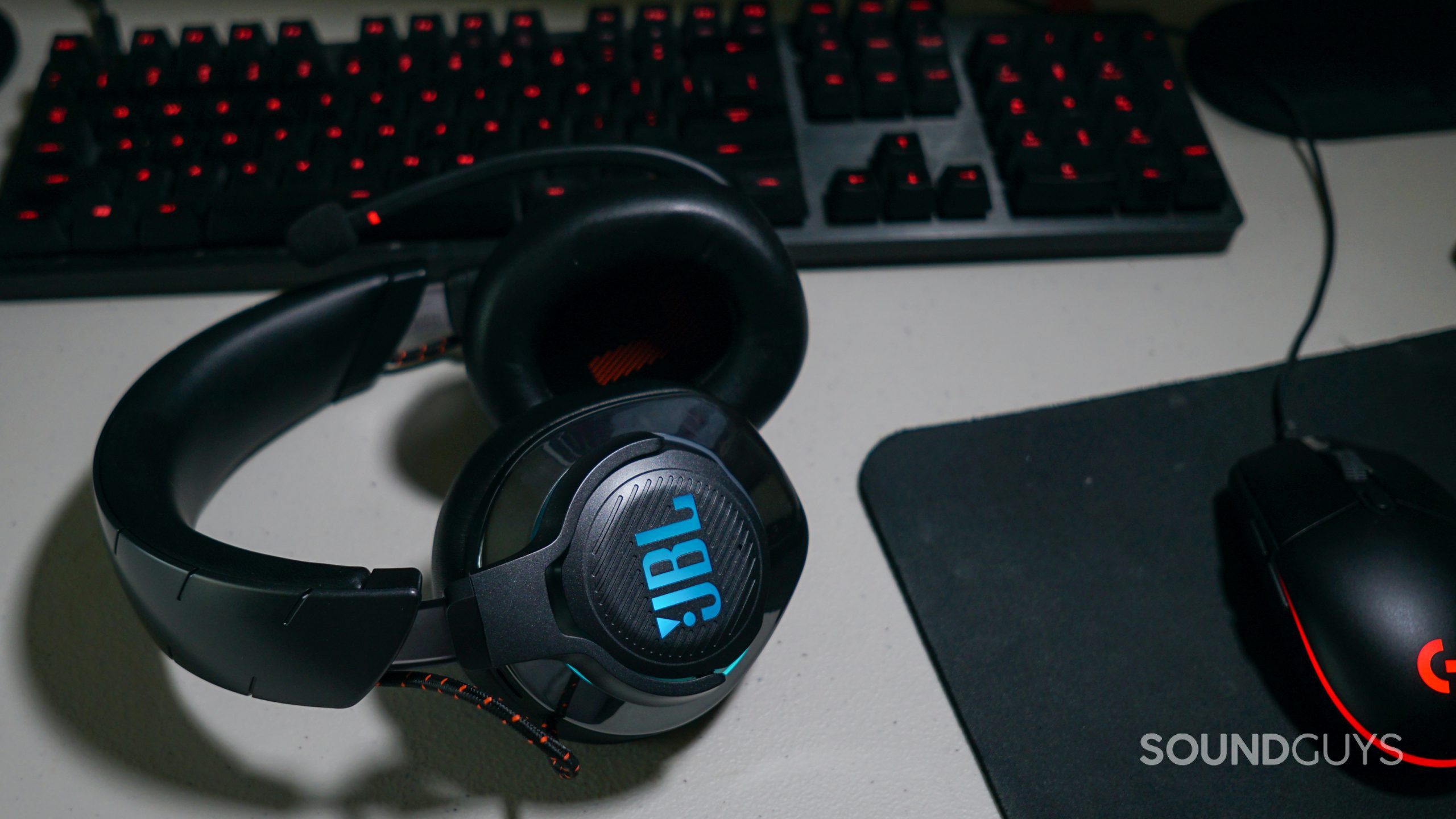
Some wireless microphones operate over a 2.4GHz frequency band (2,400-2,483.5Mhz); this is an unlicensed band, meaning anybody can transmit on it. You might be familiar with this number because your Wi-Fi system and gaming headsets operate over it. It’s worth keeping in mind that crowding this range with too many wireless devices may interfere with connection stability. However, many wireless mic systems use additional methods, called diversity, of isolating channels besides frequency—one easy way to diversify is by changing the amplitude of your signal. These methods can reduce the likelihood of interference, as a Shure representative explains:
With UHF systems, only one transmitter can work properly at a time on a selected frequency. If two or more transmitters are set on the same frequency, they must interfere with each other (IMD – intermodulation). When more than one transmitters are working at the same time, their frequencies must be set apart in certain calculated way to avoid IMD. For [the Shure] SLX, this means in a typical 24MHz bandwidth, 12 frequencies (channels) can be found and assigned to 12 transmitters without IMD. Similarly, for [Shure] SLX-D, up to 32 frequencies can be found without IMD in a 44MHz bandwidth.
In general, it is wise to look for external antennae on your wireless microphone receiver because it facilitates a stronger and wider connection range than internal antennae. However, if portability and stackability are important factors, an internal antenna might be worth its compromises.
When using a wireless microphone system, it is important to limit the amount of obstructing objects between your transmitter and receiver because this can disrupt the connection. If flawless audio quality is important to you, you should opt for a wired XLR microphone instead of a wireless one.
What is frequency response?
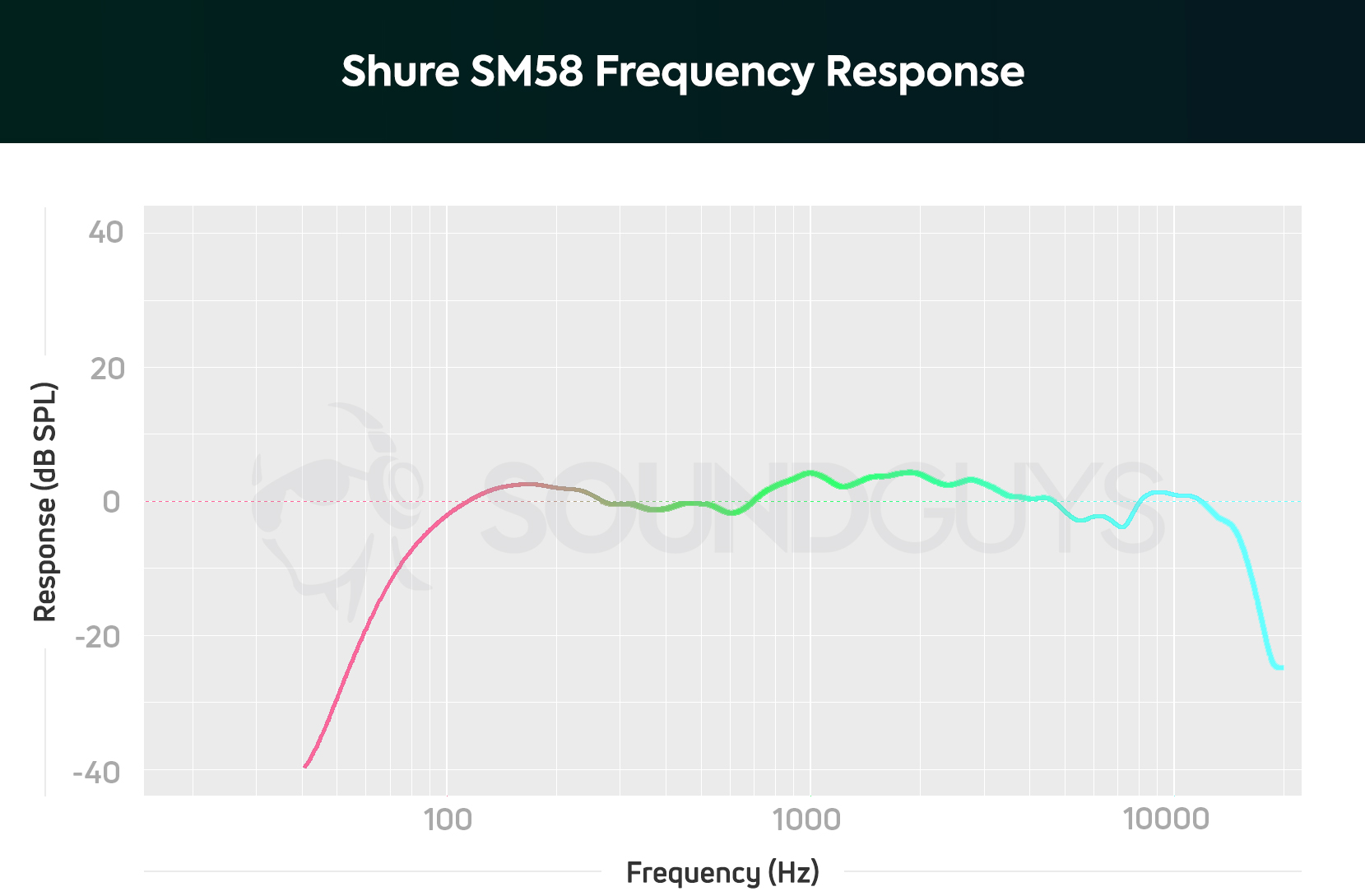
The different uses of the term “frequency” can be confusing. In this section, we are referring to the audible frequencies that a microphone capsule reproduces rather than radio frequencies that data is transmitted over.
A neutral frequency response (colloquially referred to as “flat”) is ideal for accurate audio production. This just means the frequency response chart won’t have a lot of bumps and dips. Sometimes a slight treble boost is beneficial for vocals or instruments because it amplifies the harmonic resonances of these sounds. Additionally, bass attenuation can be beneficial in reducing the proximity effect and low-end distortion.
What is a polar pattern?
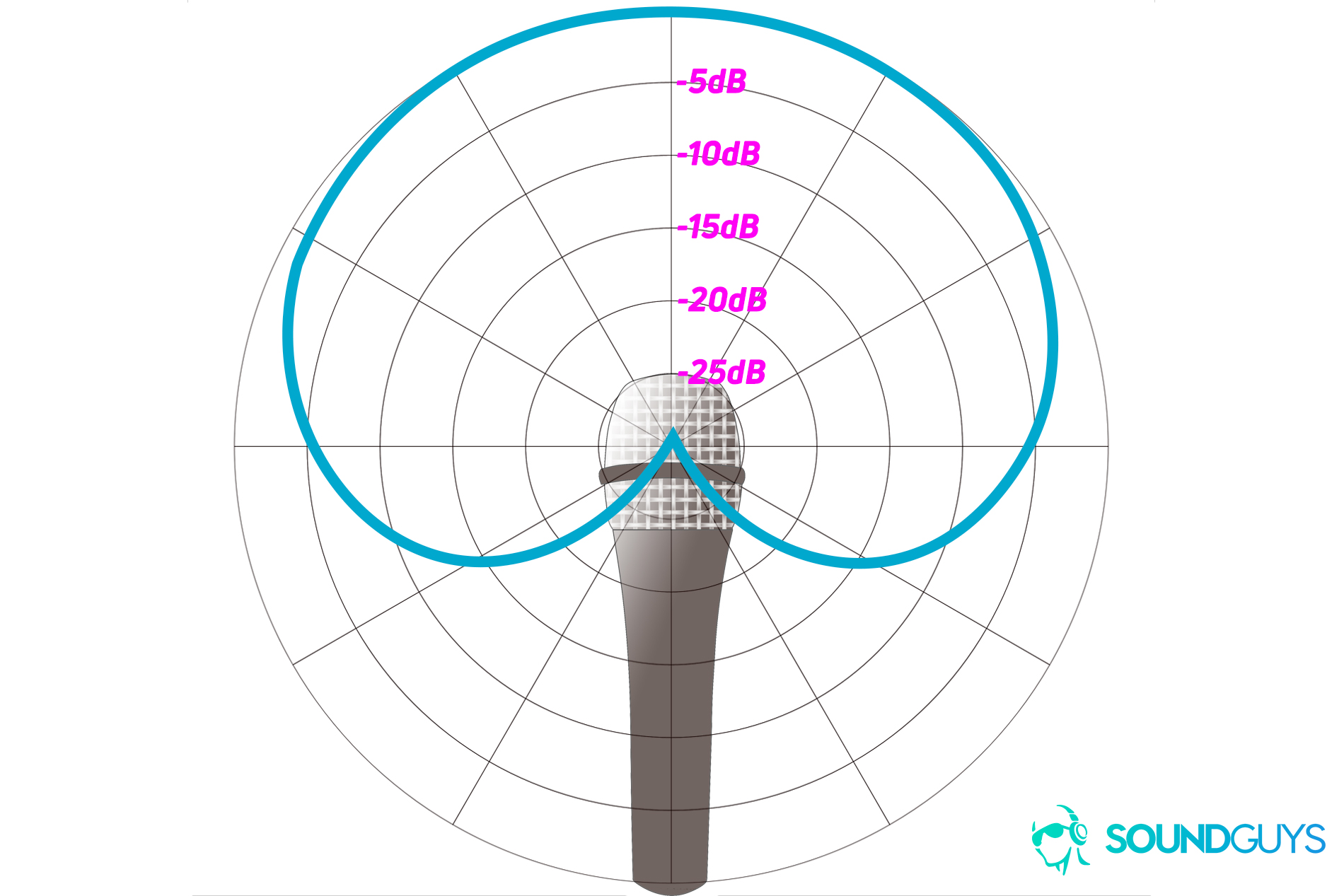
A polar pattern chart illustrates the direction from which a microphone absorbs sound. If you’re buying a handheld mic, you’ll likely end up with a cardioid pickup, which records sound from its direct front and slightly to its sides while rejecting off-axis sound. If you’re buying a lavalier mic, an omnidirectional polar pattern is common because it allows for flexibility in the placement of the mic on your person—you don’t need it to be placed directly in front of your mouth. However, an omnidirectional pattern runs the risk of picking up and amplifying unwanted room noise.
Why you should trust SoundGuys for the best wireless microphones
Each writer at SoundGuys has accumulated years of experience reporting on the consumer audio market, and our staff adheres to a strict ethics policy. We never use ads or sponsored content on the website, so you can trust that our opinions are unbiased. SoundGuys’ survival depends mainly on readers enjoying their purchases. We pride ourselves on transparently outlining objective facts while accounting for the subjective experience to contextualize an audio product’s performance. When we do misspeak, we correct and own up to it.
Frequently asked questions about wireless microphones
Honestly, you don’t really need to understand all the nitty gritty about radio frequencies. What you should do is read the description of the product you want to buy to determine what radio frequency band it operates on and find out if it is legal to use that band in your region. Also, if you want to avoid frustration with your wireless mic’s connection stability, don’t buy one that operates over a 2.4GHz frequency band.
An RF band refers to a section of the radio spectrum which is a section of the electromagnetic spectrum. A group refers to a subset of frequencies within a band, and a channel refers to a singular frequency.
The ideal frequency range for wireless microphones is 470MHz – 608MHz. Anythign above that not legal for use within the United States.
For a karaoke king or queen, handheld mics take the cake. They’re forgiving in terms of placement and capture the essence of your vocal bravado. Models like the Shure SM58 offer great frequency response and durability. Get ready to hit those high notes!
